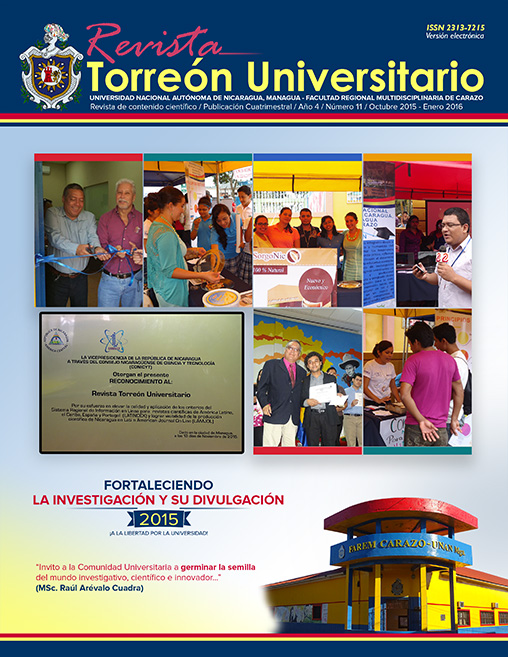East and South Nicaragua: How is this region defined from Romero and others` point of view?
Abstract
This essay analyzed the work "East and South Nicaragua, contributions to the study of its history", from the perspective of the regional history with the coordination of the study of PhD Jilma Romero Arrechavala.
This work is particularly interesting because it is part of a big project: "A regional and local study: history and present of the republic of Nicaragua".Downloads
References
BOTEY SOBRADO, A. M. (s.f.) Historias de vida. Historia portuaria. Escuela de Historia CIHAC , 142 - 166.
CARIÑO OLVERA, M. M. (1996) Hacia una nueva historia regional en México. Clío, 7 - 29.
CARRIZO, L., ESPINOZA PRIETO, M., KLEIN, J. T. (18 de marzo de 2004) MOST. (UNESCO, Productor) Obtenido de MOST: http://www.unesco.org/most
GARCÍA BRESÓ, J. (2014) Mecanismos culturales para mantener la identidad entre los indios monimboseños de Nicaragua. Encuentro N° 98 , 30 - 43.
GARCÍA GONZÁLEZ, I. (2004) Experiencias obtenidas a partir del Estudio de una Región Cubana Deprimida. SABER ULA .
ROMERO ARRECHAVALA, J. y otros. (2006) El oriente y
mediodía de Nicaragua. Aportes al estudio de su Historia. Managua: Acento S.A.
VANEGAS DELGADO, H. (2007) La región en Cuba. Provincias, regiones y localidades. La Habana: Félix Varela.
Downloads
Published
How to Cite
Issue
Section
License
The authors who publish in this journal agree to the following terms.
- The author or authors of the articles, essays or research grant the National Autonomous University of Nicaragua, Managua (UNAN-Managua) the editing rights (copyright) of the submitted work, therefore the University has the exclusive right to publish the article for the entire copyright period.
- These copyrights/authors authorize Torreón Universitario Magazine and the University to edit and disseminate/publish the article in said Magazine, including printed and electronic reproduction, storage, retrieval and any other type of publication, and sources of secondary information as services. of summaries and databases, they also empower it to protect the article against unauthorized use for dissemination by printed or electronic media (PDF, HTML, EPUB, XML or others).
License for use of content
The magazine uses the Creative Commons Attribution-NonCommercial-NoDerivs 4.0 International License.
Under this statement:

This journal is licensed under a Creative Commons Attribution-NonCommercial-NoDerivatives 4.0 International License. It can be copied, distributed and transmitted publicly as long as the author and source are cited (Revista Torreón Universitario), it should not be modified or used for any commercial purpose. The full license can be found at http://creativecommons.org/licenses/by-nc-nd/4.0/.



